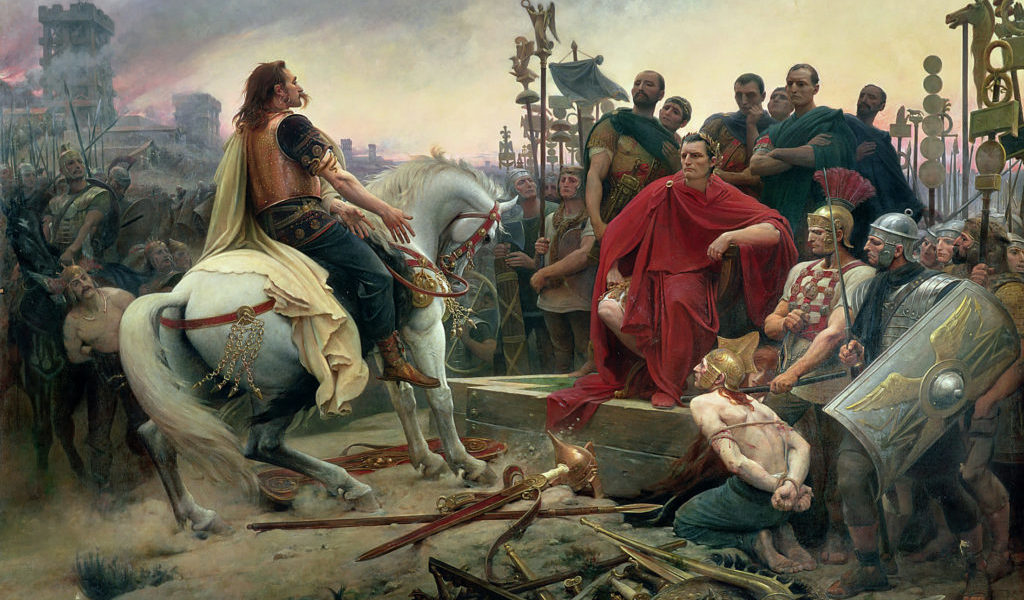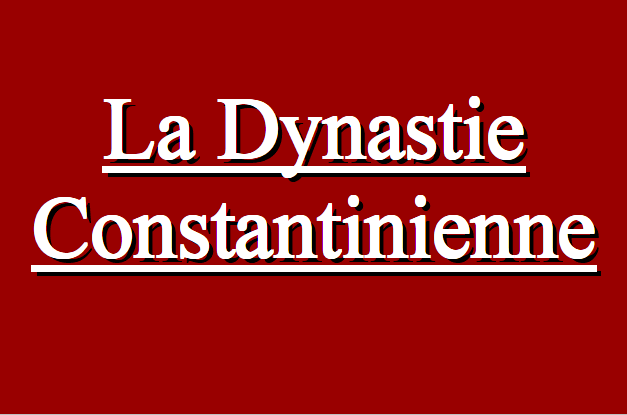Hi, as I announced to you last week, we will see today 5 important Roman battles. I chose them based on their diversity, notoriety and importance. As usual, I invite you to write in the comment space the battles that you are most passionate about and I could why not make a second volume. Here are 5 important battles of Ancient Rome.
1st battle : Gergovia
The Battle of Gergovia is certainly the most famous battle in the Roman world, surely because the Gauls defeated Caesar and so it remained a good memory. So it was in 52 BC that this battle took place. She pitted Vercingetorix (Gaulois) against Caesar (Roman). The Gauls had 30,000 men, mostly Arvernes, compared to 30,000 legionnaires and 10,000 educated horsemen for the Romans.
The battle probably took place on the Gergovia plateau, near the present-day town of Clermont-Ferrand. At that time, Vercingetorix occupied the oppidum (fortified city) as well as the nearby peaks. Caesar then dislodged the Gauls from a summit with two legions among the six he counted. So he set up a camp there and set up another camp around the oppidum to besiege the city.
As a result, the Eduan’s cavalry began to turn against the Romans. That is why Caesar leaves Gergovia with four legions in order to have them turned back to the Roman side. But during this time, in Gergovia, the Gauls decided to attack the two remaining Roman legions. The latter, although they were outnumbered, with their catapults and ballistas, and thus the Gallic assault failed. Then Caesar, once back in camp, decided to launch an assault on the Gauls in order to win the battle, but because of various strategic and combative errors, Caesar gave the order to withdraw and at that moment Vercingetorix charged the legions with his cavalry as well as its infantry.
Finally, Caesar returned to northern Gaul with the survivors, and the remaining Eduens sided with Vercingetorix. The winners of this battle are the Gauls and the losers, the Romans. According to Caesar, roman losses are more than 700 among legionnaires and more than 40 among centurions, even if it is estimated that these figures are lower than the actual losses because Julius Caesar did not want to admit such a heavy defeat. As far as the Gauls are concerned, it is not known how much their losses are, even if these are considered to be less than for the Romans.
2nd battle : Alesia
I couldn’t talk about the Battle of Gergovia without talking about the Battle of Alesia. This battle marked Caesar’s revenge on Vercingetorix and his victory over the Gauls. It was in 52 BC, shortly after the Battle of Gergovia. We think that it took place at the oppidum of Alesia in the Gold Coast. It thus once again pitted the Romans against the Gauls.
The Romans were led by Caesar and the Gauls by Vercingetorix, Commios, Vercassivellaunos, Eporédorix and Viridomaros. Caesar was accompanied by 10 to 12 Roman legions or 60,000 to 72,000 legionaries against according to Caesar 80,000 gauls under siege, 240,000 rescue men and 8,000 horsemen. At that time, Vercingetorix and his Gauls had locked themselves in the city in order to take the Romans in a grip with the rescue army. To defeat the Gauls, Caesar used the siege technique. He set up a 15km-long rampart surrounding the oppidum and another 22km to block the rescue that could arrive and various traps were set up. Caesar then ordered the construction of several war forts to protect his army. Thus, when the rescue army arrived, it was defeated by the Romans and the besieged Gauls surrendered and Vercingetorix was taken prisoner.
He was later send to Rome and executed after seven years in detention. The other Gauls were mostly enslaved. Subsequently in Gaul, the remaining Gallic tribes were enslaved one by one until the total enslavement of Gaul.
3rd battle : Panormus
The 3rd battle is the Battle of Panormus (currently Palermo). It took place in 252 or 251 BC, during the First Punic War, and pitted the Romans commanded by Metellus against the Carthaginians commanded by Hasdrubal.
Hasdrubal decided to attack the Roman army, located near Panormus, in order to defeat the Romans and to take power from Carthage, which had fallen under Roman rule some time before. The Carthaginians were accompanied by elephants, so they fled when the Romans began to attack, sowing panic among the carthaginians. At the end of the battle, Hasdrubal was taken prisoner and executed at Carthage.
The Romans rewarded the elephants for sending them to Circus Maximus and did not even pursue the army in rout. The death toll from this battle is still 20,000 dead for Carthage and more than 140 elephants captured.
4th battle : Siege of Carthage
With this new battle, we will stay in the city of Carthage. This battle took place from 149 to 146 BC at Carthage. It opposed the Roman Republic to Carthage. The Romans were led by Manius Maniliusn, Marcius Censorinus and Scipio Emilien and the Carthaginians by Hasdrubal the Boetharque (this is obviously not the same Hasdrubal as in the previous battle).
It was in 149 BC that the Romans launched the first offensive against Carthage. Their army consists of 80,000 legionaries, 4 legions, 4000 horsemen, Allied troops and 50 quinqueremes (a kind of Roman galley). So they have a higher strike force than Carthage. The latter refused to attack the Romans and preferred to yield to the demands of their opponents. More than 200,000 armors, 2000 catapults and their entire fleet were sent to the Romans. Thus, Carthage no longer poses any threat to Rome. Censorinus later gave a speech to the Carthaginians, ordering them to abandon the city and rebuild it 15km further inland. In exchange, he saves life to all the inhabitants and the temples and tombs will be kept in the abandoned city.
Subsequently, the city refused and declared war on Rome, unfortunately for it it had been disarmed earlier. In an emergency, everyone mobilized and Hasdrubal took command of the city. Thus, weapons are created and the ramparts fortified. Subsequently, the first assault of the Romans was repelled. Faced with the city’s defences, including a 32km wall, nearly 9m wide, the Romans understood that this battle would become a war of attrition. So they decided to set up a camp. Then a rescue army was created at Nepheri, south of Carthage. Groups of legionaries will be massacred in various ambushes.
Some time later, at the military level, both sides remained stranded. And from a political point of view, Carthage lost allied cities and even ports joined the Romans. At the beginning of 147, Scipio, now Consul, took control of the siege. He remonered his army and launched a first offensive in order to weaken the Carthaginian defenses. Thus, he cut the city off all supplies by building fortifications around it. As a result, land roads are cut off. He then blocked the port of Carthage by throwing a levee, blocking the besieged city.
Finally, it was in April 146 that the last assault was launched. The Romans returned through the port, killing the inhabitants and burning the buildings and it was after nearly a week of street fighting that the city was taken. Hasdrubal fled and for the population, most were killed and the rest enslaved. On the Roman side, more than 17,000 people died. The city is then looted and destroyed.
5th battle : Actium
We have just seen four ground or mainly terrestrial battles. That is why we will talk about the Battle of Actium which is a naval battle. And certainly the most important naval battle of Ancient Rome.
This battle took place on 2 September in 31 BC, during the last civil war of the Roman Republic in the Ambracic Gulf. She opposed Octavian’s supporters to Mark Antony’s supporters and the Egyptians with Cleopatra. Octavian’s army consisted of 400 ships, 80,000 soldiers and 12,000 horsemen and was assisted by Agrippa. Mark Antony and Cleopatra’s had 500 ships, 100,000 soldiers and 12,000 horsemen.
The battle broke out because of the rising tensions between Octavian and Mark Antony and the question of Caesar’s legacy (I remind you that Julius Caesar died in 44 BC). During the battle, Cleopatra quickly realized that Octavian’s forces were superior and she fled. Antony stayed for a while longer but also fled. Thus, Octavian wins the battle and becomes the only ruler of the Roman world. Thus, the era of the Roman Republic ends and begins with that of the Roman Empire. Following Octavian’s victory, Mark Antony committed suicide and Cleopatra did the same some time later. It is estimated that there were about 10,000 deaths in Octavian and between 5000 and 13,000 in Mark Antony and Cleopatra.
Here are the summaries of 5 battles of Ancient Rome. I hope you enjoyed this article. As usual, I invite you to put the battles you prefer in the comment space. For next week’s article, we’re going to talk about numismatics because I’m going to present my 5 favorite Roman coins. See you next week!
Get my book Around the Roman Coin for free by clicking here




